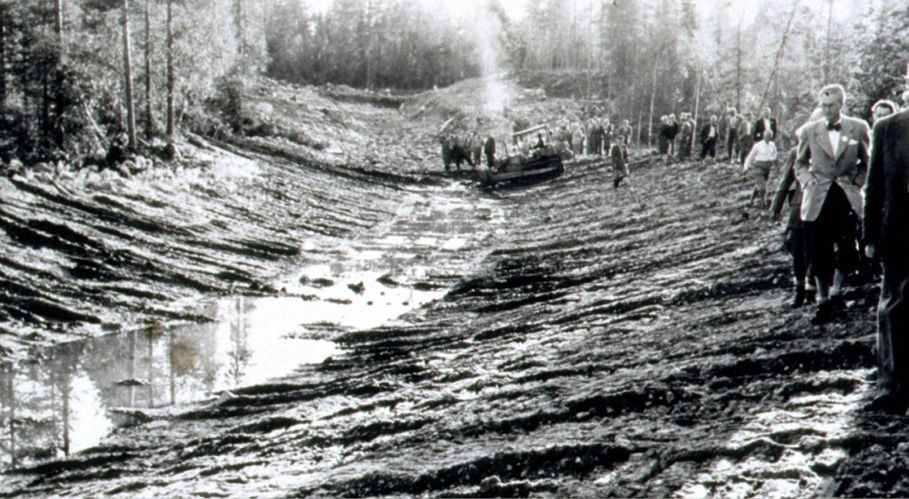
In many streams, the bottom was bulldozed smooth.

The long trench in Gimån. Photo: SMHI

Lake Revsundssjöns outlet at Stavre. Photo: SMHI

Water pond Långränndammen at Gimån, which was demolished in 2018.

A cleaned lake outlet where the stone from the watercourse is laid up at the edges.
Historic environmental impact
Many waters around the lakes were used for timber floating in the past. Before the road network had been developed and the timber could be transported by truck, waterways were the most efficient way to transport the timber to the coast and the sawmills.
To create simplified channels where the timber could be transported without being damaged, rivers were straightened and cleared of boulders and large stones. These measures degraded habitats for fish and other organisms radically. Dams stopped the fish from reaching their spawning areas and along the cleaned bottoms they were no longer able to find food or shelter. Several species lost large parts of their habitats. Channeling of watercourses also increased the current and the transport of sediment, organic matter and nutrients.
Today, restoration of channelized watercourses is a common conservation measure that aims to restore the habitats that once existed in and around the waterways. It is both a measure for maintaining and strengthen the species that live there, but also to create positive impact on water quality. By making the tributaries more complex, runoff slows down which can increase nutrient retention and decrease sediment transport.



